Description
Main Components of a Water-Cooled Chiller
A water-cooled chiller consists of four main components:
1. Compressor: The compressor compresses the refrigerant gas, increasing its pressure and temperature.
2. Condenser: The condenser transfers the heat of the refrigerant gas to water, converting it into a liquid.
3. Evaporator: The evaporator absorbs heat from water or another heat transfer fluid, boiling the refrigerant liquid into a gas.
4. Expansion Valve: The expansion valve reduces the pressure and temperature of the refrigerant liquid, causing it to return to a vapor state.
Types of Water-Cooled Chillers
Water-cooled chillers are divided into two categories based on the type of compressor:
Reciprocating compressor water-cooled chillers: This type of chiller uses a reciprocating compressor to compress the refrigerant gas. Reciprocating compressor water-cooled chillers are less expensive than other types of water-cooled chillers, but they produce more noise.
Scroll compressor water-cooled chillers: This type of chiller uses a scroll compressor to compress the refrigerant gas. Scroll compressor water-cooled chillers are quieter than reciprocating compressor water-cooled chillers, but they are more expensive.
In addition to the type of compressor, water-cooled chillers are also divided into different types based on their cooling capacity:
Small water-cooled chillers: This type of chiller is designed for cooling capacities up to 10 tons of refrigeration. Small water-cooled chillers are typically used for small commercial and residential applications.
Medium water-cooled chillers: This type of chiller is designed for cooling capacities between 10 and 100 tons of refrigeration. Medium water-cooled chillers are typically used for medium commercial and residential applications.
Large water-cooled chillers: This type of chiller is designed for cooling capacities over 100 tons of refrigeration. Large water-cooled chillers are typically used for large commercial and industrial applications.
How a water-cooled chiller works
- The refrigerant enters the compressor in a liquid state from the refrigerant receiver.
- The compressor compresses the refrigerant, increasing its pressure and temperature.
- The compressed refrigerant is then transferred to the condenser.
- The condenser transfers the heat of the refrigerant to the water, which turns it into a liquid.
- The liquid refrigerant exits the condenser and enters the expansion valve.
- The expansion valve reduces the pressure and temperature of the refrigerant.
- The refrigerant with reduced pressure and temperature enters the evaporator.
- The evaporator absorbs heat from the water or other heat transfer fluid, converting the refrigerant into a gas.
- The refrigerant gas exits the evaporator and returns to the compressor, and the cycle repeats.
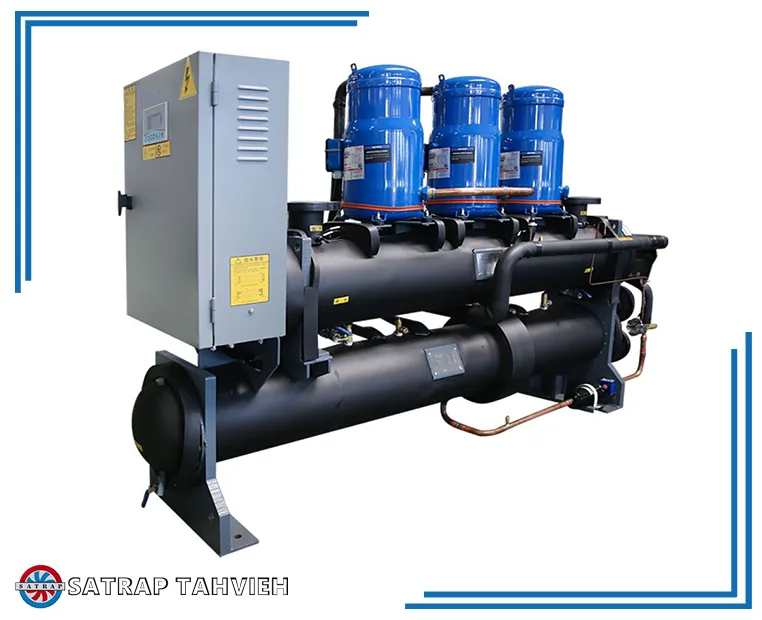
Applications of Water-Cooled Chillers
Water-cooled chillers are used in a wide range of applications, including:
- Air conditioning systems: Water-cooled chillers are used to cool air in residential, commercial, and industrial buildings.
- Industrial cooling systems: Water-cooled chillers are used to cool equipment and processes in various industries, including food, pharmaceutical, chemical, and metalworking.
- Process cooling systems: Water-cooled chillers are used to cool materials and products in various industrial processes, including oil refining, chemical production, and food processing.
Advantages and Disadvantages of Water-Cooled Chillers
Water-cooled chillers offer several advantages that make them suitable for various applications. However, these chillers also have some disadvantages that should be considered before selecting them.
Advantages of Water-Cooled Chillers
- Lower cost: Water-cooled chillers are generally less expensive than air-cooled chillers. This is because water is used as a medium for heat transfer.
- Higher efficiency: Water-cooled chillers typically have higher efficiency than air-cooled chillers. This is due to the more effective heat transfer of water compared to air.
- Easier installation and maintenance: Water-cooled chillers are generally easier to install and maintain than air-cooled chillers.
Disadvantages of Water-Cooled Chillers
- Water requirement: Water-cooled chillers require water for heat transfer. This can be a limitation in areas where water is scarce or the cost of water is high.
- Space requirement: Water-cooled chillers typically occupy more space than air-cooled chillers. This is due to the need for a condenser to cool the refrigerant gas.
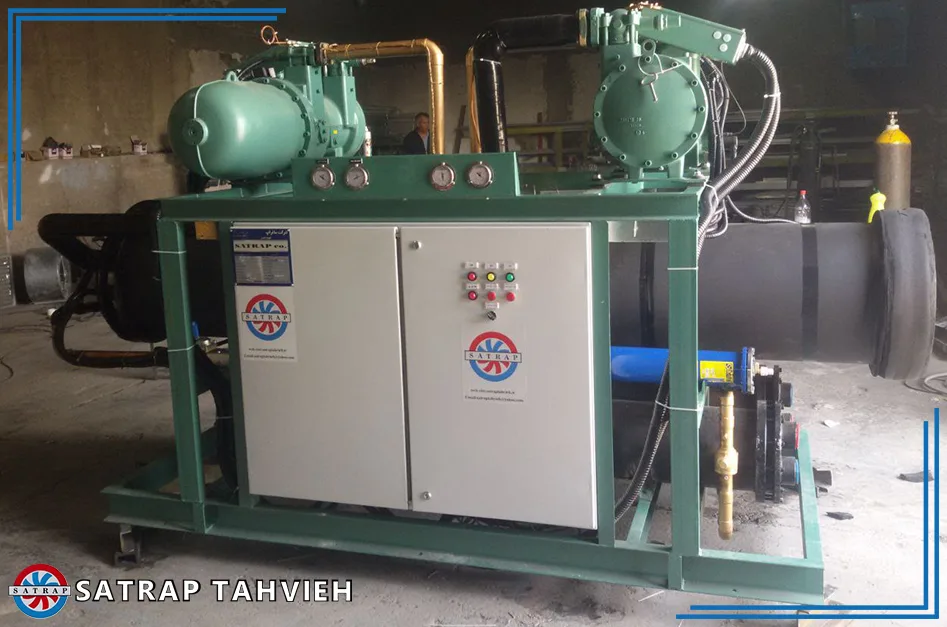
The factors affecting the price of water-cooled chillers
Compressor type: The compressor is one of the most critical components of a water-cooled chiller. It is responsible for compressing the refrigerant gas. Water-cooled chillers with scroll compressors are quieter than those with reciprocating compressors, but they are also more expensive.
Cooling capacity: The cooling capacity of a water-cooled chiller indicates how much water it can cool in one hour. Water-cooled chillers with higher cooling capacities are more expensive than those with lower cooling capacities.
Technical specifications: Some water-cooled chillers have additional features such as a digital controller, an anti-freeze system, and an energy management system. These features can increase the price of the water-cooled chiller.
Manufacturer brand: Water-cooled chillers from reputable brands have higher quality and better after-sales service. These factors can increase the price of water-cooled chillers.
Market conditions: The price of water-cooled chillers is also affected by market conditions. Factors such as the price of raw materials, the exchange rate, and the demand for water-cooled chillers can affect the price of this equipment.
Where to use a water-cooled chiller
A water-cooled chiller is suitable for cooling buildings, industrial processes, and other applications. These chillers have many advantages, such as the ability to cool large volumes of water, low maintenance costs, and the ability to be used in various environments.
Suitable conditions for using a water-cooled chiller
Water-cooled chillers are suitable for use in environments with hot and humid climates. These chillers can provide the cold water needed for cooling using water from a cooling tower.
A water-cooled chiller is a suitable option for cooling buildings, industrial processes, and other applications. These chillers have many advantages and can be used in hot and humid climates.
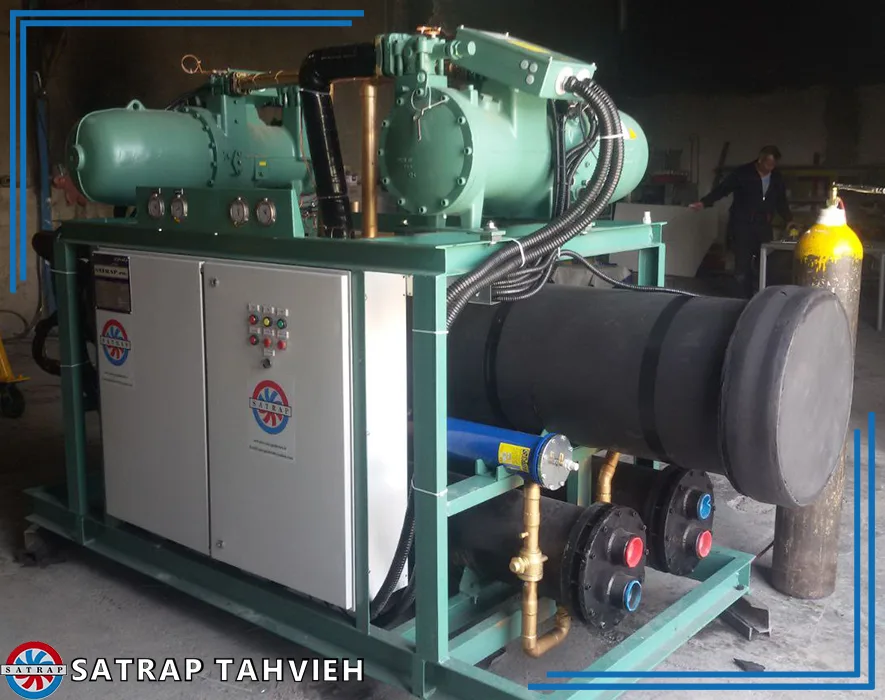
Factors to Consider When Choosing a Water-Cooled Chiller
When choosing a water-cooled chiller, there are several factors to consider, including:
- Cooling capacity: The cooling capacity of the water-cooled chiller must be adequate for the cooling requirements.
- Compressor type: The compressor is one of the most important components of a water-cooled chiller. The type of compressor affects the performance and price of the water-cooled chiller.
- Technical specifications: Some water-cooled chillers have additional features such as a digital controller, anti-freeze system, and energy management system. These features can affect the price of the water-cooled chiller.
- Manufacturer brand: Water-cooled chillers from reputable brands have higher quality and better after-sales service.
Conclusion
A water-cooled chiller is a cost-effective and reliable cooling system used for a wide range of applications. These chillers are typically used in small to medium-sized commercial and industrial buildings.
Buying a Water-Cooled Chiller from Satraptahvieh Alborz
Industrial complexes are looking for innovative ways to reduce energy consumption and save on overhead costs. Satraptahvieh Alborz is a designer and manufacturer of various types of water-cooled chillers, air-cooled chillers, mini chillers, cooling towers, air handling units, and other cooling and heating HVAC equipment, in line with the latest standards in the refrigeration industry. Saving water and electricity, low installation and commissioning costs, and outstanding performance in reducing ambient temperature are among the factors contributing to the popularity of this cooling system. Satrap is known as one of the leading companies in the installation and commissioning of cooling systems. You can contact our experienced team to purchase and install a suitable air-cooled chiller for your residential, commercial, or industrial complex.

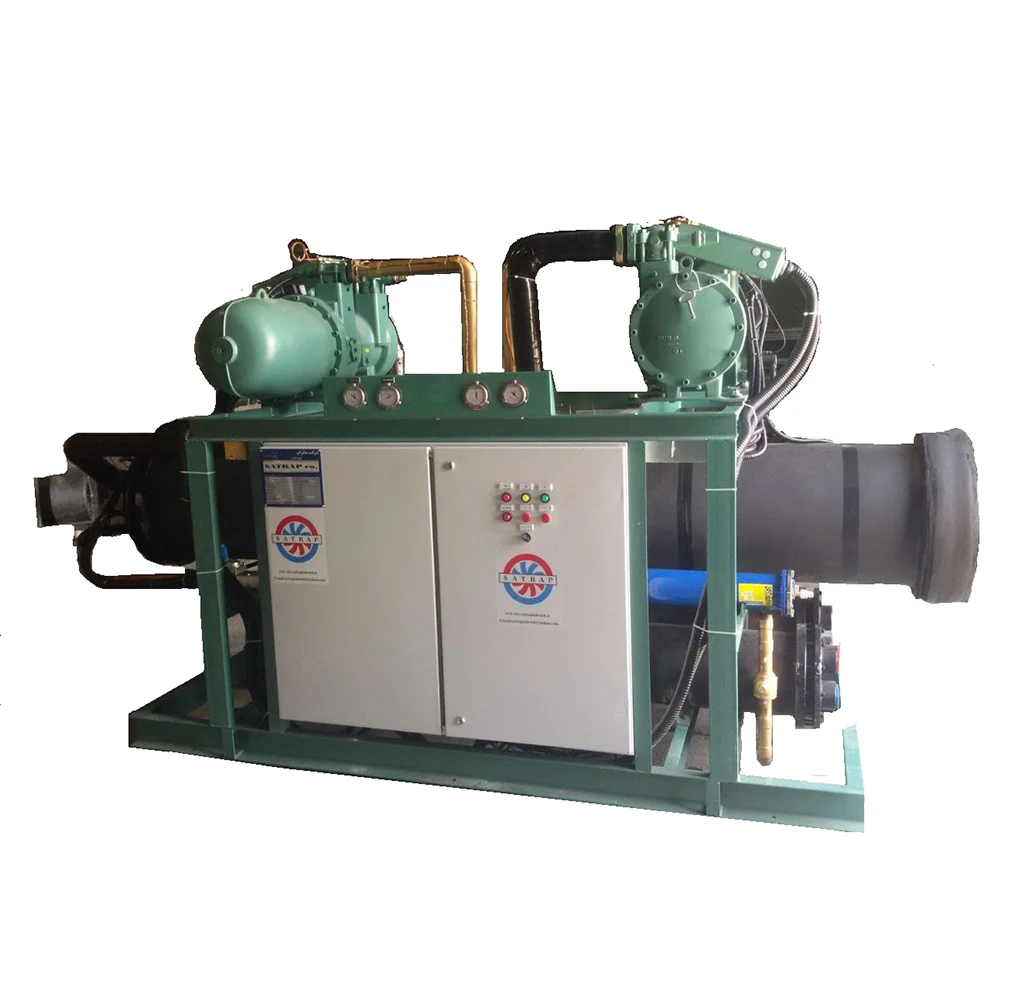
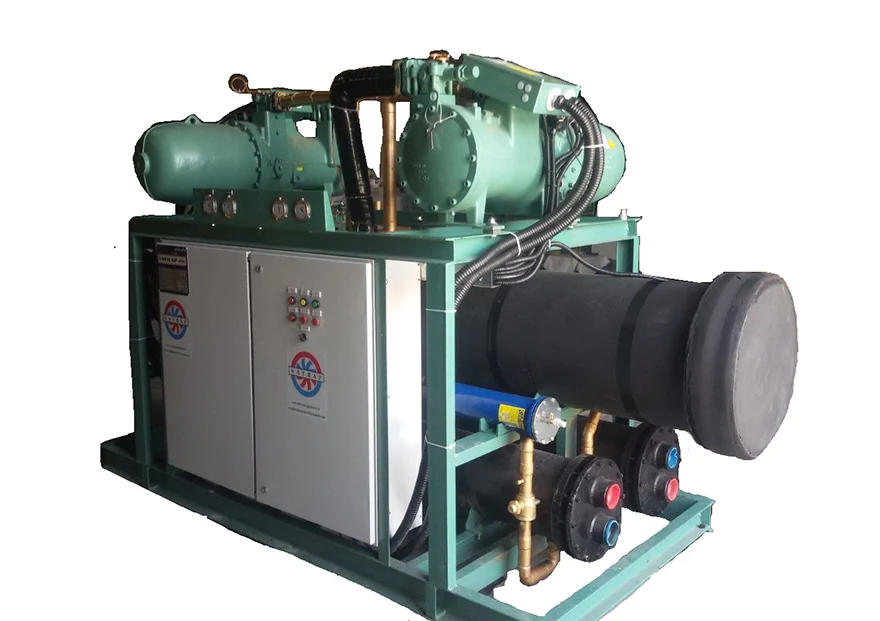
Reviews
There are no reviews yet.